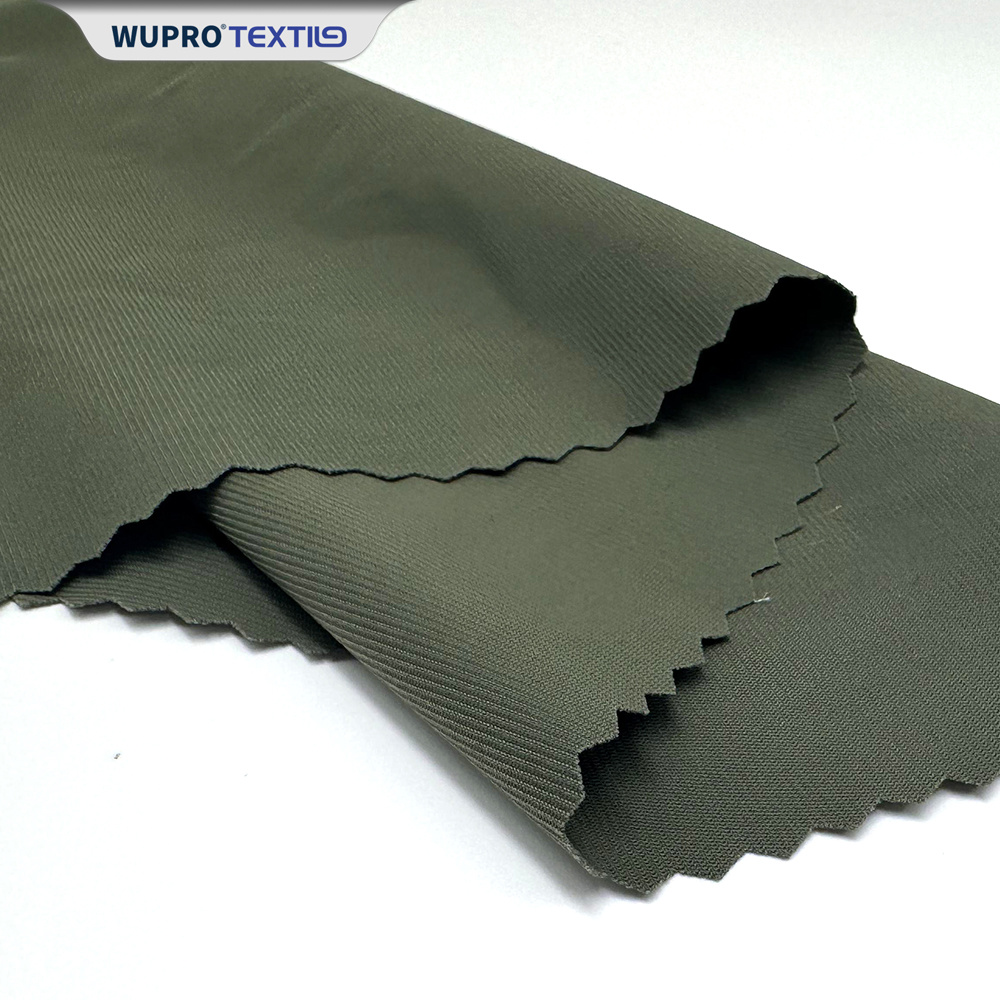Exploring the Benefits of Antimicrobial Fabrics in Everyday Life: A Comprehensive Overview
Exploring the Benefits of Antimicrobial Fabrics in Everyday Life
Table of Contents
1. Introduction to Antimicrobial Fabrics
2. What Are Antimicrobial Fabrics?
3. Key Benefits of Antimicrobial Fabrics
3.1 Enhanced Hygiene and Health
3.2 Odor Control and Freshness
3.3 Increased Durability
3.4 Sustainability and Environmental Impact
4
Jun 12,2025

Exploring the Benefits of Antimicrobial Fabrics in Everyday Life
Table of Contents
- 1. Introduction to Antimicrobial Fabrics
- 2. What Are Antimicrobial Fabrics?
- 3. Key Benefits of Antimicrobial Fabrics
- 3.1 Enhanced Hygiene and Health
- 3.2 Odor Control and Freshness
- 3.3 Increased Durability
- 3.4 Sustainability and Environmental Impact
- 4. Applications of Antimicrobial Fabrics in Daily Life
- 5. How to Choose the Right Antimicrobial Fabric
- 6. Myths and Facts About Antimicrobial Fabrics
- 7. The Future of Antimicrobial Fabrics
- 8. Conclusion
- 9. Frequently Asked Questions
1. Introduction to Antimicrobial Fabrics
Antimicrobial fabrics have gained significant attention in recent years, particularly as we become increasingly aware of hygiene in our daily lives. From clothing to home textiles, the integration of antimicrobial properties into fabric has proven to be a game-changing advancement in textile technology. These innovative materials not only enhance our comfort but also offer critical health benefits, making them an essential consideration in our pursuit of wellness and cleanliness.
2. What Are Antimicrobial Fabrics?
Antimicrobial fabrics are textiles that have been treated with antimicrobial agents to inhibit the growth of bacteria, fungi, and other microorganisms. These agents can be added during the manufacturing process or applied post-production. The primary goal of these fabrics is to maintain their cleanliness, prolong their lifespan, and enhance user comfort.
These fabrics are commonly produced using various fibers, including cotton, polyester, and nylon, which may be treated with substances like silver ions, copper, or specialized chemical compounds. The result is a fabric that resists microbial growth, keeping it fresher and cleaner for longer periods of time.
3. Key Benefits of Antimicrobial Fabrics
As we delve into the various advantages of antimicrobial fabrics, we uncover how they can profoundly impact our daily lives.
3.1 Enhanced Hygiene and Health
The most notable benefit of antimicrobial fabrics is their capacity to enhance hygiene. These materials effectively reduce the presence of harmful pathogens, aiding in the prevention of infections and illnesses. By minimizing the growth of bacteria, antimicrobial fabrics can help maintain a cleaner environment, especially in high-contact areas such as hospitals, gyms, and public transportation.
Moreover, individuals with sensitive skin or those prone to allergies may find relief from irritation when using antimicrobial textiles, as these materials actively combat allergens and irritants.
3.2 Odor Control and Freshness
One of the most common issues with traditional fabrics is odor retention, which often arises from the buildup of sweat and bacteria. Antimicrobial fabrics tackle this problem head-on by inhibiting the growth of odor-causing microorganisms. This results in fresher clothing, bedding, and upholstery, which can be especially beneficial for active individuals or those living in warmer climates.
In everyday life, wearing antimicrobial clothing means enjoying a more pleasant experience, whether at the gym, during outdoor activities, or simply going about daily routines.
3.3 Increased Durability
Antimicrobial treatments not only help in maintaining hygiene but also enhance the fabric's durability. By preventing the growth of bacteria and fungi that can cause degradation, antimicrobial fabrics tend to last longer than their untreated counterparts. This increased longevity leads to fewer replacements and reduced environmental impact, aligning with the growing demand for sustainable products.
3.4 Sustainability and Environmental Impact
In today's eco-conscious world, consumers are increasingly prioritizing sustainability. Antimicrobial fabrics can contribute to a more sustainable lifestyle by reducing the frequency of washing required. Fewer washes mean less water and energy consumption, along with a decrease in the release of microplastics into the environment. Additionally, the durability of these fabrics translates to less textile waste, making them a more eco-friendly option.
4. Applications of Antimicrobial Fabrics in Daily Life
Antimicrobial fabrics are versatile and find applications in various sectors, enhancing our everyday experiences.
4.1 Clothing and Activewear
The sports and fitness industries have embraced antimicrobial fabrics to create comfortable and hygienic activewear. From workout clothes to socks, these materials provide athletes with the confidence that they can perform without worrying about odor or bacteria buildup.
4.2 Home Textiles
In home textiles, antimicrobial properties are increasingly utilized in bedding, curtains, and upholstery. These fabrics contribute to a cleaner living environment, making them ideal for families and individuals looking to minimize allergens and odors in their homes.
4.3 Medical and Healthcare Settings
The healthcare industry relies heavily on antimicrobial fabrics, especially in hospital settings where hygiene is paramount. Surgical gowns, bedding, and patient clothing made from antimicrobial materials help to control the spread of infections, ensuring a safer environment for both patients and healthcare workers.
4.4 Footwear
Footwear brands are also incorporating antimicrobial fabrics to combat odor and enhance comfort. Shoes with these properties provide wearers with a fresher experience, promoting foot health and comfort throughout the day.
5. How to Choose the Right Antimicrobial Fabric
When selecting antimicrobial fabrics, it’s essential to consider several factors, including the intended use, comfort, breathability, and maintenance. Here are some tips to guide your decision:
5.1 Understand Your Needs
Identify the specific requirements based on your lifestyle. For example, active individuals may prioritize moisture-wicking and breathability, while home textiles might focus more on durability and allergen resistance.
5.2 Check for Certification
Look for certifications or testing that confirm the effectiveness of the antimicrobial treatment. Reputable brands often provide information regarding the longevity and efficacy of their antimicrobial properties.
5.3 Evaluate Comfort and Feel
Touch and feel the fabric before making a decision. Comfort is paramount, especially for clothing and bedding, so ensure the textile feels good against the skin and has the desired flexibility.
5.4 Consider Environmental Impact
Choose brands that prioritize sustainability. Research the materials used and the manufacturing processes to ensure you are making an eco-friendly choice.
6. Myths and Facts About Antimicrobial Fabrics
As antimicrobial fabrics become more mainstream, several myths have emerged that may cause confusion.
6.1 Myth: Antimicrobial Fabrics Are All the Same
**Fact:** Not all antimicrobial fabrics are created equal. The effectiveness and longevity of the antimicrobial treatment can vary significantly based on the methods and materials used.
6.2 Myth: Antimicrobial Fabrics Are Harmful to Health
**Fact:** When treated correctly, antimicrobial fabrics are safe for daily use. Reputable manufacturers adhere to safety standards to ensure that their products do not pose health risks.
6.3 Myth: Antimicrobial Fabrics Do Not Require Washing
h3>**Fact:** While antimicrobial fabrics help reduce odor and bacterial growth, they still require regular washing to maintain hygiene.
7. The Future of Antimicrobial Fabrics
The future of antimicrobial fabrics looks promising as technological advancements continue to emerge. Research into new and more effective antimicrobial agents is ongoing, with a focus on enhancing durability, effectiveness, and environmental sustainability. Collaboration between manufacturers and researchers is likely to yield innovative solutions that meet the evolving demands of consumers, further integrating antimicrobial fabrics into our daily lives.
The development of smart textiles, which incorporate sensors and other technologies alongside antimicrobial properties, could also revolutionize how we utilize fabrics for health and wellness.
8. Conclusion
In conclusion, **the benefits of antimicrobial fabrics in everyday life** are multifaceted, offering significant advantages in hygiene, odor control, durability, and sustainability. These innovative materials are transforming various aspects of our lives—from clothing and home textiles to healthcare applications—allowing us to enjoy a healthier and more comfortable lifestyle.
As we continue to navigate our daily routines, embracing antimicrobial fabrics is a proactive step toward enhanced well-being and environmental consciousness. It’s time to explore these remarkable textiles and consider how they can positively influence our lives.
9. Frequently Asked Questions
1. How do antimicrobial fabrics work?
Antimicrobial fabrics work by incorporating agents that inhibit the growth of bacteria, fungi, and other microorganisms. These agents can be embedded in the fabric during manufacturing or applied afterward.
2. Are antimicrobial fabrics safe for sensitive skin?
Yes, many antimicrobial fabrics are designed to be safe for sensitive skin, as they help reduce allergens and irritants. However, always check for specific materials that suit your skin type.
3. Can antimicrobial fabrics prevent infections?
While antimicrobial fabrics significantly reduce the growth of harmful microorganisms, they are not a substitute for proper hygiene practices. They can, however, help minimize the risk of infections in environments where cleanliness is crucial.
4. Do antimicrobial fabrics require special care when washing?
Typically, antimicrobial fabrics can be washed like regular textiles, but it’s essential to follow the manufacturer's care instructions to maintain their effectiveness.
5. Are there eco-friendly options for antimicrobial fabrics?
Yes, many brands are now producing antimicrobial fabrics using sustainable materials and processes, helping to minimize environmental impact while still offering the benefits of antimicrobial properties.
PREVIOUS:
Contact Us
E-mail:
Address:
1302, Zhongjun Fortune Center, Fengli Street, Shishi, Fujian, China.









